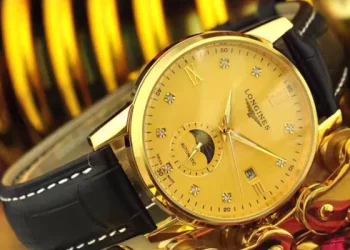The Rolex Daytona is a legendary watch that has been around for over five decades. It has become one of the most sought-after watches in the world, and its popularity only continues to grow. In recent years, the Zenith movement has become a popular choice for many Rolex Daytona enthusiasts. This movement was first introduced in the early 1990s, and it has become a staple in the world of high-end watches. In this article, we will take a closer look at the Zenith movement in the Rolex Daytona, including its history, design, and performance.
History of the Zenith Movement:
The Zenith movement was first introduced in 1991 as an alternative to the Valjoux 72 movement that had been used in the Rolex Daytona for many years. The Valjoux 72 had been a reliable movement, but it was gradually becoming outdated as newer technology became available. The Zenith movement was seen as a way to modernize the Daytona, and it quickly gained popularity among watch enthusiasts.
Design of the Zenith Movement:
The Zenith movement is a self-winding chronograph movement with a power reserve of approximately 50 hours. It features a column wheel and vertical clutch, which are both advanced mechanisms that improve the accuracy and precision of the watch. The movement also has a frequency of 36,000 vibrations per hour, which allows for greater accuracy in timekeeping.
Performance of the Zenith Movement:
One of the key benefits of the Zenith movement is its accuracy. The movement is known for its precise timekeeping, which is essential in a high-end watch like the Rolex Daytona. The column wheel and vertical clutch mechanism also provide smooth operation when starting, stopping, and resetting the chronograph function. Additionally, the 50-hour power reserve ensures that the watch can run for several days without needing to be wound.
Advantages of the Zenith Movement:
There are several advantages to choosing a Rolex Daytona with the Zenith movement. Firstly, the movement is reliable and accurate, which is essential for a high-end watch. Secondly, the column wheel and vertical clutch mechanism provide excellent performance and smooth operation. Lastly, the 50-hour power reserve ensures that the watch can run for several days without needing to be wound.
Disadvantages of the Zenith Movement:
While the Zenith movement is an excellent choice for many Rolex Daytona enthusiasts, there are some disadvantages to consider. One potential drawback is that the movement is not as prestigious as the in-house Rolex movement. Some collectors may prefer a Daytona with a Rolex movement for this reason. Additionally, the Zenith movement has been known to be less durable than other movements, so it may require more frequent servicing.
Conclusion:
The Zenith movement has become a popular choice for many Rolex Daytona enthusiasts in recent years. It is a reliable and accurate movement that provides excellent performance and smooth operation. While there are some disadvantages to consider, the Zenith movement is an excellent option for anyone looking for a high-end watch with a modern chronograph movement. Overall, the Zenith movement has helped to keep the Rolex Daytona relevant and desirable for over five decades, and its popularity only continues to grow.





























